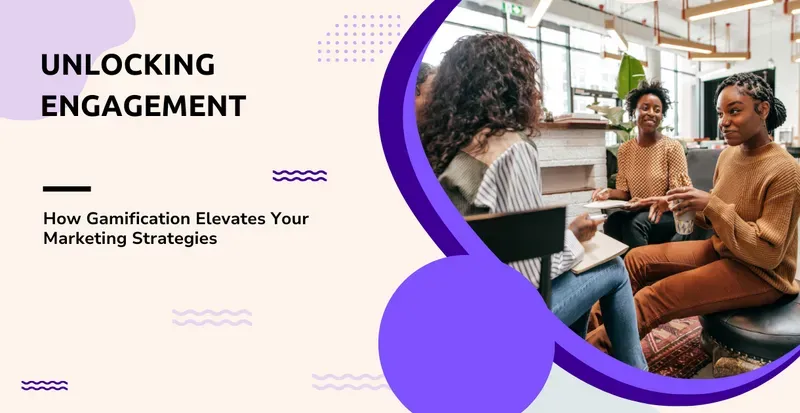Elevate Marketing with Gamification: Engage More!
By Sonaksh Singh Rawat on

Unlock the Secret Sauce for Explosive Sales: How Gamification is Changing the Marketing Game Forever!
Gamification in Marketing: The Secret of Boosting Engagement and Sales
In e-commerce, incorporating gamification techniques can make shopping a delightful and rewarding experience for consumers. It encourages them to explore new product areas, navigate through different sections of the site, and, ultimately, increase their purchases and boosting engagement sales for your business.
This article will explore the various elements of gamification in marketing, detailing how to harness gamification for e-commerce and highlighting some standout examples of successful gamification campaigns. Additionally, it will guide on tracking the success of gamification strategies and provide advice on initiating such efforts.
What is Gamification in Marketing?
Gamification in marketing involves integrating game-like elements, mechanics, and design principles into non-gaming contexts, such as marketing strategies and digital user experiences. The objective is to engage and motivate consumers by using the psychological aspects that make games engaging, including competition, achievement, and rewards.
In the domain of e-commerce, gamification strategies are applied to various aspects of the customer journey, from attracting new visitors to promoting loyalty, stimulating repeat purchases, and boosting engagement sales.
Benefits of Gamification in Marketing
Gamification integrates elements and principles of game design into non-gaming environments to captivate and maintain user interest. This versatile strategy is skilled at achieving a broad spectrum of marketing goals through its engaging nature. Employing gamification in marketing adds excitement and engagement, transforming routine interactions into memorable experiences. It cleverly incorporates fun and challenge from gaming into marketing efforts, aiming to enhance customer engagement, bolster brand loyalty, and boosting engagement sales.
A key advantage of gamification is its power to enhance the customer experience. By making interactions fun, it encourages repeat visits and sustained engagement, deepening the connection between the brand and its audience.
Additionally, gamification leverages the competitive nature of humans, motivating participation through rewards and recognition, such as points, badges, or leaderboards. This competition element encourages deeper brand engagement, akin to turning marketing into a competitive sport where the prize is a stronger brand relationship.
Another significant benefit is the wealth of data generated through gamified interactions, providing insights into customer behavior and preferences. This valuable information can refine marketing strategies, making them more personalized and effective. In essence, gamification in marketing benefits both customers and businesses by wrapping marketing in fun and engagement, making it something customers look forward to. In a challenging landscape where capturing audience attention is pivotal, gamification stands out as an innovative and engaging approach.
- Boosted Interaction: By incorporating elements of fun and competition, gamification ensures users stay engaged, encouraging them to participate in marketing campaigns. Thus spending more time on web pages, and interacting meaningfully with the brand.
- Amplified Customer Devotion: Gamification fosters a sense of achievement and gratification, enhancing customer loyalty. Loyalty programs with gamified elements motivate customers to return, promote the brand, and develop a lasting commitment.
- Unlocking Customer Insights Through Gamification: By engaging customers in a gamified environment, companies can gain deep insights into customer preferences and behavior. This data allows for the refinement of marketing strategies, ensuring personalized and targeted approaches.
- Boosted Brand Memory: By integrating fun and engagement, gamification ensures the brand experience remains memorable. Unique and enjoyable gamified interactions create positive brand associations, making the brand unforgettable.
- Reward-Driven Customer Engagement: Gamification motivates customers to take desired actions, from making purchases to sharing content on social platforms, through the allure of earning rewards or recognition. This enhanced engagement assists businesses in achieving their objectives.
Types of Gamification in Marketing
Gamification in marketing adopts numerous forms to captivate and inspire customers uniquely.
For starters, points and badges serve as symbols of recognition and achievement, chronicling a user’s journey towards excellence. In online communities, these symbols act as markers of engagement and contribution, infusing every interaction with a possibility to earn and progress.
On the other hand, leaderboards ignite competitive spirits, showcasing efforts and achievements in a dramatic display of ambition, inviting participants to strive for the top. Adventures and challenges add excitement and purpose to activities, turning the routine into captivating narratives of accomplishment.
Participants earn rewards through various activities, fostering a culture of engagement and recognition. Launching leaderboards highlights achievements, nurturing a competitive environment that encourages interaction. Recognizing efforts with rewards and incentives creates an environment of motivation and camaraderie, amplifying individual contributions within teams.
Promotions aim to incentivize behaviors through tangible rewards, encouraging participation in activities like purchases or recommendations.
Loyalty programs enhance customer experiences, offering rewards that foster a sense of community and continuous engagement. Gamification strategies, incorporating elements like leaderboards and challenges, fulfill marketing objectives such as brand awareness and customer loyalty, guiding the crafting of effective campaigns.
Gamification Examples
Examples of successful gamification in marketing include
- Nike+: Transforming fitness tracking into a community-driven, motivational tool
- Starbucks Rewards: Rewarding purchases with perks that enhance the customer experience.
- Sephora’s Beauty Insider Program: Personalizes the shopping experience with rewards tailored to beauty preferences.
- H&M’s Recycle Week: Engages customers in sustainability efforts, rewarding eco-friendly actions.
Wrapping Up
Conclusively, gamification is a great strategy in e-commerce for boosting engagement and sales, allowing businesses to create interactive and enjoyable shopping experiences. It motivates customers to explore, participate, and purchase more extensively. Through creative implementation of gamification tactics, companies can effectively engage their target audience, achieving their marketing objectives while enhancing the customer journey.




